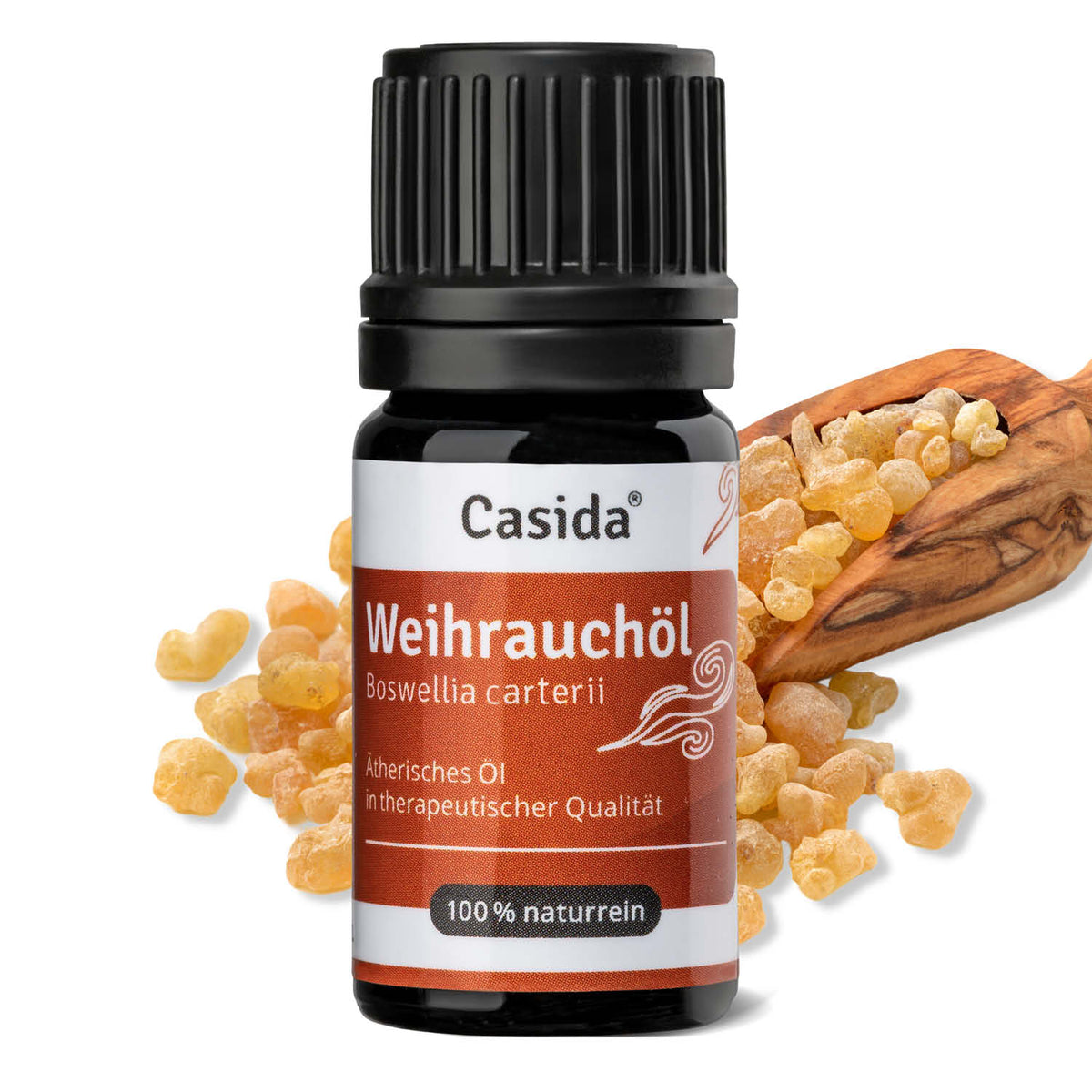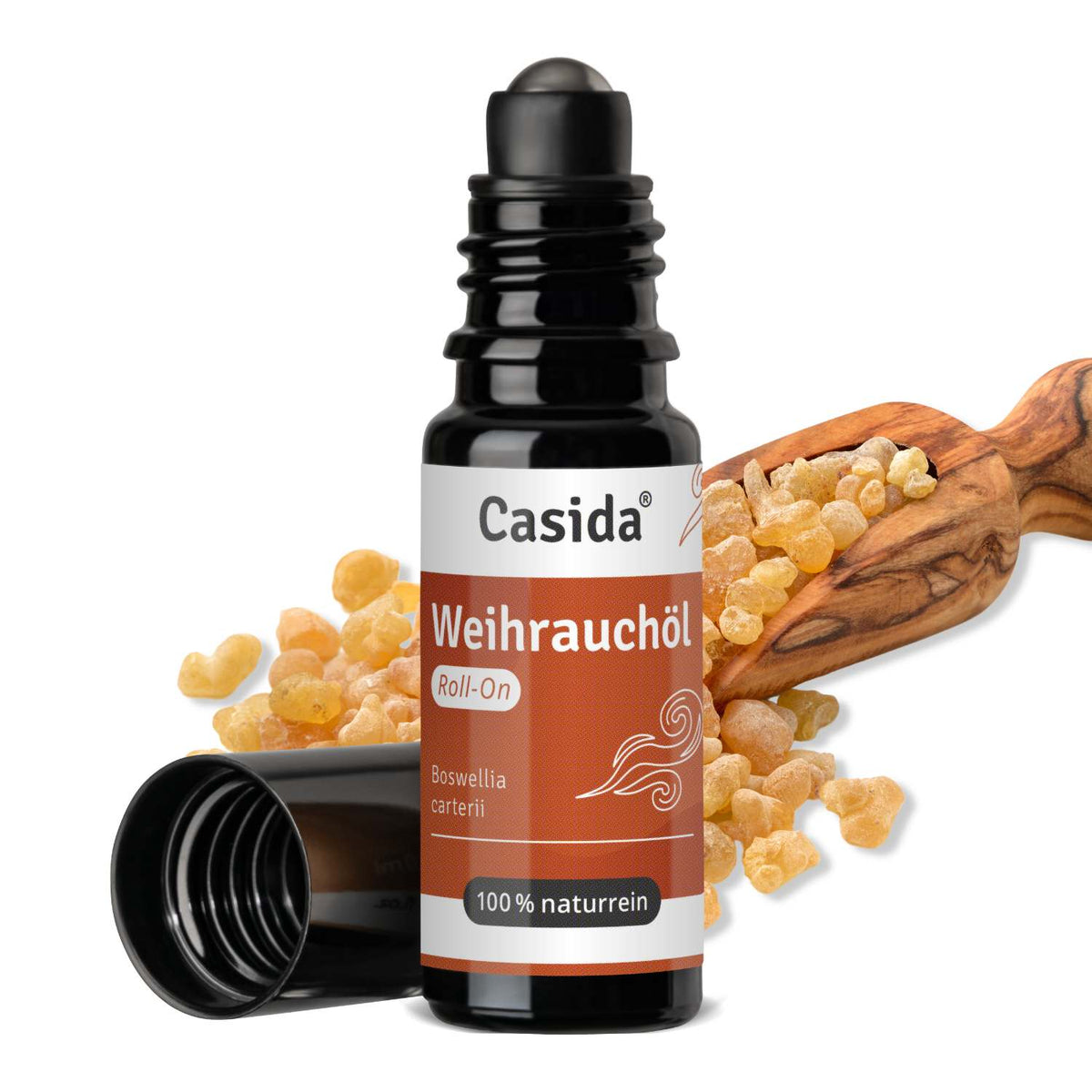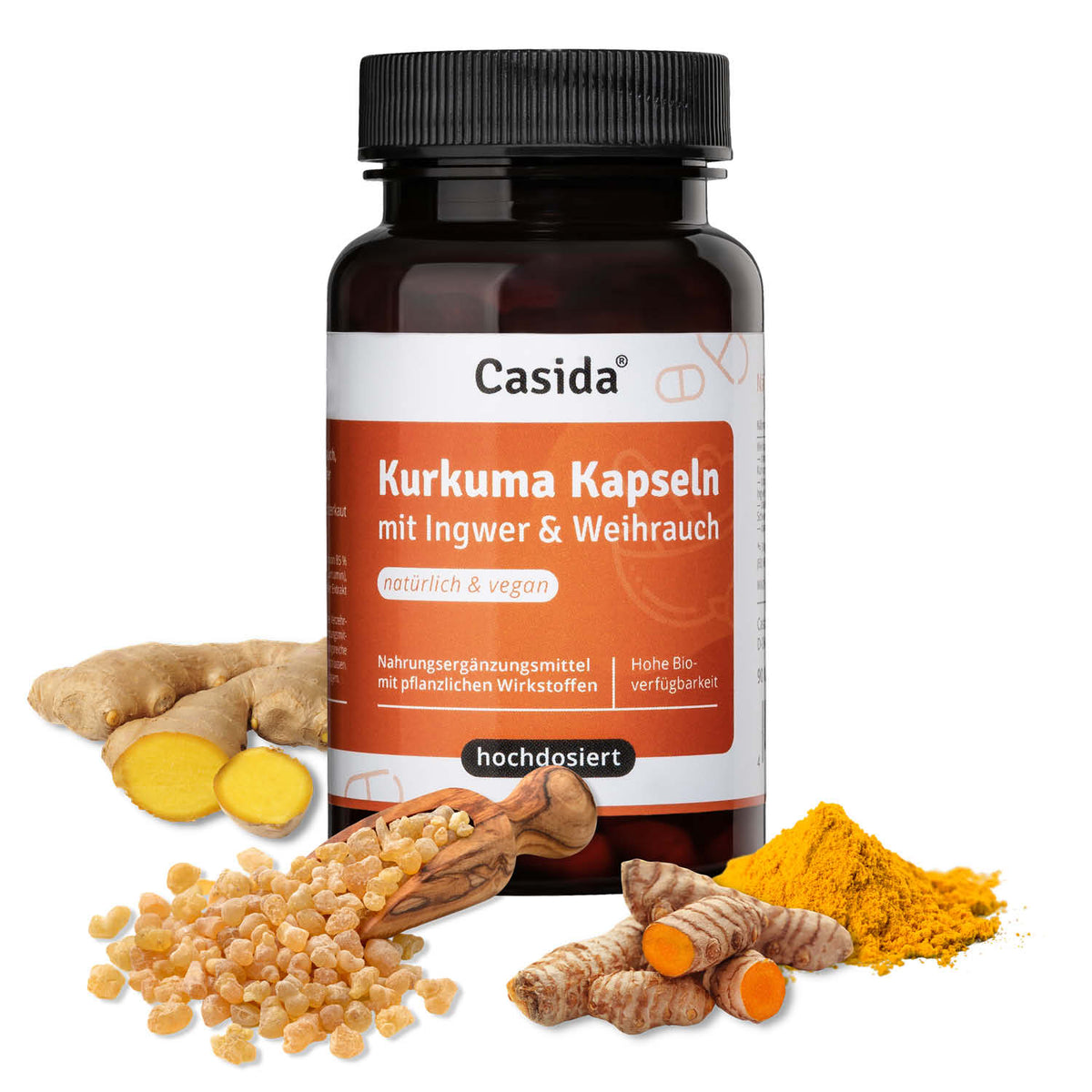Frankincense has been known for centuries for its analgesic, anti-inflammatory, antibiotic and decongestant effects. Frankincense is also used to treat chronic inflammatory bowel diseases such as Crohn's disease and rheumatism.
However, frankincense preparations are not recognized as medicinal products in Germany. Instead, they are sold as dietary supplements. Frankincense is also said to help with irritated and dry skin and is therefore also used in cosmetics.
Here you can find out more about the effects of frankincense, its use and possible side effects.
Table of contents
What is frankincense?
Frankincense is the resin of the frankincense tree, which belongs to the balsam tree family (Burseraceae) and comprises 24 different species. However, only Indian frankincense is listed in the European Pharmacopoeia as that of Boswellia serrata.
This is a tree that only grows in dry places in India. The resin is extracted from the trunks and branches of the tree. The aim is to allow the milky sap that is released to dry in the air to form a viscous mass, which is then collected after a certain period of time. The gum resin is then sold in the form of irregular pieces or small grains.
As a great deal of time is required to extract the resin, frankincense was considered a luxury in various cultures such as Egypt. In ancient Egypt, only high-ranking personalities were mummified with it. Frankincense was also used in Indian, Arabic, Egyptian, Greek, Roman and Chinese medicine to treat inflammation and infections.
What are the effects of frankincense?
Since frankincense and its various effects have aroused scientific interest, several studies have been published in the meantime. The effects of frankincense include anti-inflammatory, antibacterial, antidepressant and analgesic properties.
Thanks to these properties, frankincense can provide relief for joint diseases such as osteoarthritis, rheumatism or arthritis, asthma, chronic inflammatory bowel diseases such as Crohn's disease or ulcerative colitis, psoriasis, multiple sclerosis and neurodermatitis.
Frankincense for rheumatism
The effect of frankincense on joint diseases such as osteoarthritis has already been investigated in several studies. In research with patients suffering from osteoarthritis, promising results were achieved through the use of boswellia frankincense extract. Higher doses of boswellic acid were used for four weeks and these are said to have led to improved joint function and reduced joint pain.
According to Dr. Gerhardt from the University Hospital in Mannheim, in addition to joint pain, chronic inflammatory bowel diseases were also examined under the influence of frankincense. The results suggest that frankincense can certainly help with rheumatoid arthritis as well as chronic inflammatory bowel diseases.
Rheumatism is a chronic disease of the musculoskeletal system in which muscles, joints and tendons are affected by inflammation. This causes pain in the corresponding structures. Rheumatoid arthritis is the most common form.
As with osteoarthritis, inflammatory reactions are also decisive for the progression of the disease in rheumatism. Pain occurs due to the limited functionality of the cartilage. The most important effect of frankincense in rheumatism and osteoarthritis is therefore the inhibition of inflammatory reactions. The special organic substances play a decisive role here.
How is frankincense used?
Many people will be familiar with frankincense from the church, as it is used in religious ceremonies and symbolizes worship, purification and prayer. In traditional medicine in many countries around the world, frankincense has been used for centuries to treat various illnesses. The analgesic effect of frankincense was also recognized in Europe in the 19th century and used to treat joint problems. Having fallen into oblivion in the meantime, frankincense once again aroused the interest of modern medicine in the 1980s.
Frankincense for ingestion
Frankincense extract is available in the form of medicines and dietary supplements. The gum resin of Boswellia serrata may only be used in the form of standardized finished medicinal products, while the resin itself is not suitable for internal use. In Europe, medicines are therefore only available in a roundabout way.
However, frankincense can easily be taken in the form of food supplements such as frankincense capsules.
Using frankincense externally
You can also benefit from the many positive effects of frankincense by using frankincense essential oil - the effect is felt through the skin and the sense of smell.
Frankincense essential oil is often used for its aromatherapeutic and medicinal properties. Here are some of the most popular uses:
- Anti-inflammatory: Frankincense oil has anti-inflammatory properties and can help treat joint and muscle pain.
- Calming: Frankincense oil can have a calming effect on the nerves and relieve stress and anxiety.
- Respiratory ailments: Inhaling frankincense oil can help relieve respiratory conditions such as asthma, bronchitis and colds.
- Improved skin: Frankincense oil can help treat skin conditions such as acne, eczema and wrinkles.
- Improved digestion: Frankincense oil can help to alleviate digestive problems such as bloating, stomach pain and indigestion.
It is important to note that frankincense essential oil is very concentrated and should be diluted with a carrier oil (e.g. almond oil or coconut oil) before applying to the skin. It is also advisable to consult a doctor or aromatherapist before use.
What are good frankincense supplements?
Food supplements with frankincense effect are available over the counter and are usually offered in the form of capsules. In contrast to frankincense extract from drugstores, these are not standardized. When choosing the right dietary supplement, the origin, composition and of course the quality of the product play the most important role.
When buying food supplements with frankincense effect, for example, it is important to know from which type of frankincense the extract is obtained. Most studies have been carried out on extracts derived from Boswellia serrata, while the extract from Boswellia carterii has not been sufficiently researched. In addition, the more boswellic acid contained in the frankincense extract, the better.
The Casida frankincense-turmeric-ginger complex is the ideal combination of active ingredients for daily use. The frankincense extract in Casida Frankincense Capsules comes from Boswellia serrata and contains 85% boswellic acid. The natural food supplement with purely plant-based active ingredients should be taken three times a day unchewed with sufficient liquid. The high-dose capsules are also suitable for vegans.
Are there any frankincense side effects?
Side effects such as allergic reactions or gastrointestinal complaints rarely occur when taking natural food supplements such as Casida frankincense capsules. Other possible side effects are as yet unknown.
Sources & further links on the subject of the effects of frankincense:








